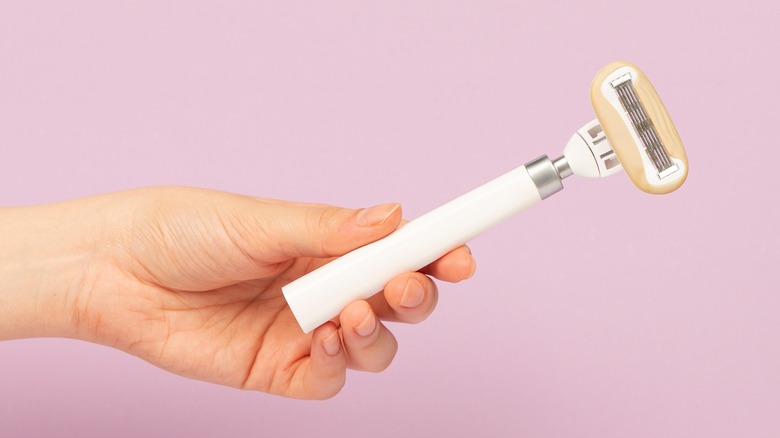You Probably Aren't Changing Your Razor Blade Enough
Anyone who has had to shave knows it can be a tedious task. Between an already busy day-to-day and always having to be on the go, budgeting time for shaving can be an added annoyance. Then there's the conflict between spending money on new razor blades or trying to get away with still using the one that you already have. Needless to say, shaving is not a fun task.
However, keeping up with your shave is actually easier when you constantly rotate your razor blade. Doing this makes sure you get a clean shave and prevents painful cuts. As dermatologist Jeffrey Benabio tells Oprah.com, "Shaving with a bacteria-ridden blade can cause folliculitis, the little red bumps that appear after a day or so." Not to mention the fact that dull, much-used blades can cause extra nicks. So while it can be a burden to remember to change your razor blade, it's in your skin's best interest that you add it to your to-do list. Making sure you are using a clean, functional razor blade is your best bet to ensuring that each shave is quick and effective. Specifically, here's when to toss your old blade for a new one.
How often should you change your razor blade?
Knowing when to change your razor blade will depend on multiple factors. That includes the quality of the razor and how often you are shaving. According to the American Academy of Dermatology Association, you should change or throw away your disposable razor blade every five to seven shaves. It's also recommended that you thoroughly rinse your razor after every shave. Cleaning your razor ensures there's no buildup of hairs, shaving gels, or dead skin cells on the razor blade before the next use (via Gillette Venus).
Bolin Webb adds that the lifespan of your razor blades can vary depending on your hair type. If you have thicker and denser hair, you'll likely need to replace your razor sooner. This is because the more challenging hair you have, the more work your blade needs to do. With thick hair, the razor blade can wear out quicker than if you had thin, soft hair. Bolin Webb advises that if your blade is no longer gliding easily while you shave, it's a sign that you need to replace the blade. Anytime your razor is no longer moving smoothly, starts to cause ingrown hairs, or shows signs of rust, it is time to replace the blade (per Healthline).
How to get the most out of your razor
It can be frustrating needing to constantly replace your razor blade, but there are some ways you can make them last longer. L'Oreal Paris recommends cleaning out your razor regularly to extend its lifespan. To do this, all you need to do is run your razor blade under hot water, as this will help remove any hairs, gels, or skin cells left behind. If you want to take an extra step, you can add anti-bacterial soap to ensure it is clean. Most importantly, you want to tap out any excess water and leave it out in a dry place. Don't keep it in your shower or bath, since moisture will only help bacteria and rust grow on the razor blade.
Another way to extend your razor blade's life is by following a proper shaving routine. The English Shaving Company suggests using plenty of shaving cream or gel when shaving to help create less friction on the blade. You never want to attempt to dry shave since this will cause the razor to lose its sharpness. And once the razor loses its keen edge, you'll need to replace it to avoid cuts. So for best results and longer razor use, maybe skip the dry shave.


